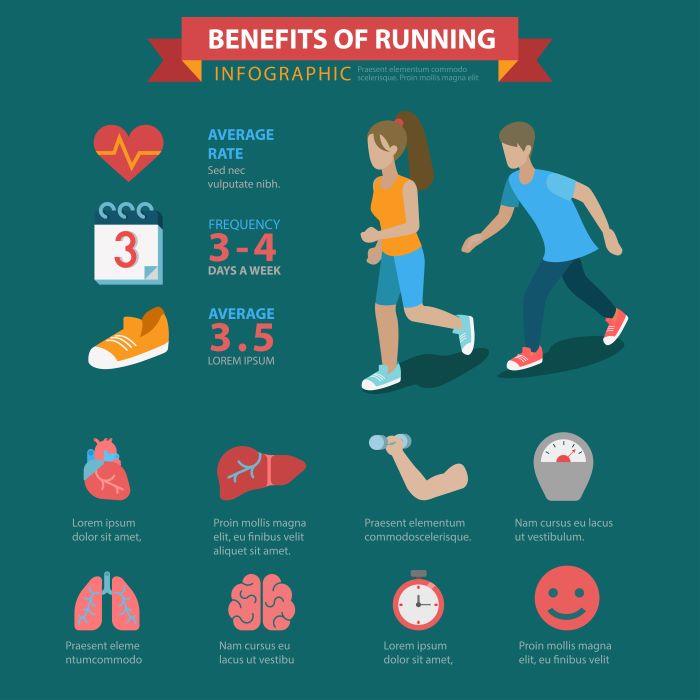When it comes to achieving your fitness goals, understanding how many miles running per week for fitness is crucial. The optimal mileage can vary significantly based on several factors, including your current fitness level, running experience, and specific goals, such as weight loss, endurance training, or preparing for a race.
For beginners, starting with a manageable distance is essential. This could range from 10 to 15 miles per week, allowing your body time to adapt to the new activity. As you progress, gradually increasing your mileage can help improve your cardiovascular fitness and overall endurance.
For intermediate runners, a weekly mileage of 15 to 30 miles is often recommended. This range provides a balance between building stamina and avoiding overtraining. Many runners in this category also incorporate a mix of easy runs, tempo runs, and long runs to enhance their performance.
Advanced runners training for specific events may aim for 30 to 50 miles or more per week. This level of mileage often involves structured training plans, including speed work, hill training, and long runs. Regardless of your level, it’s essential to listen to your body and adjust your mileage based on how you feel.
Incorporating rest days and cross-training can also optimize your fitness journey. Remember, consistency is key! Visit our website to learn more and get started today! Click here.
Factors Influencing Optimal Weekly Running Distance

Determining the optimal weekly running distance involves considering various factors that can significantly impact your training outcomes. Understanding these factors can help tailor your running regimen to fit your personal fitness goals.
- Current Fitness Level: Your existing fitness level plays a vital role in deciding how many miles you should run weekly. Beginners may need to start with shorter distances to build a solid foundation, while experienced runners can handle higher mileage.
- Running Goals: The purpose behind your running can dictate your weekly mileage. For instance, if you’re training for a marathon, you might aim for a higher volume than if you’re simply looking to improve your general fitness or lose weight.
- Body Composition: Your weight and overall body composition can influence how your body responds to running. Heavier individuals may find that starting with lower mileage and gradually increasing it helps reduce the risk of injury.
- Age: Age can affect recovery times and injury susceptibility. Younger runners may recover quicker and handle more mileage, whereas older runners might benefit from a more conservative approach to avoid strain.
- Rest and Recovery: Adequate rest is crucial for improving performance and preventing injuries. If you’re not allowing your body enough time to recover, it may hinder your ability to increase mileage effectively.
By taking these factors into account, you can create a tailored running plan that not only helps you achieve your fitness objectives but also keeps your body healthy and injury-free.
Recommended Mileage for Beginners and Intermediate Runners
When it comes to establishing a running routine, understanding the recommended mileage for beginners and intermediate runners is essential for building endurance and avoiding injury. Each group has unique needs based on fitness levels and running experience.
Beginners
For those just starting their running journey, it’s crucial to ease into the sport. A good starting point is to aim for 10 to 15 miles per week. This can be achieved through a combination of:
- Run/Walk Intervals: Incorporating walking intervals into your runs allows your body to adapt gradually.
- Consistent Scheduling: Running three to four times a week helps establish a habit while allowing for recovery.
- Short Distances: Begin with sessions of 1 to 3 miles, gradually increasing as your stamina improves.
Intermediate Runners
Once you’ve built a solid foundation, you can start increasing your mileage. Intermediate runners typically run between 15 to 30 miles per week. To achieve this, consider the following tips:
- Long Runs: Incorporate a weekly long run, gradually increasing the distance to improve endurance.
- Varied Pace: Integrate tempo runs and intervals to enhance speed and efficiency.
- Cross-Training: Engage in other forms of exercise, such as cycling or swimming, to improve overall fitness while reducing the impact on your joints.
By following these guidelines, beginners can safely establish a running habit, while intermediate runners can continue to challenge themselves and progress in their fitness journey.
Balancing Running with Other Fitness Activities

Integrating running into a broader fitness routine can enhance overall performance and prevent burnout. Striking a balance between running and other fitness activities is key to achieving well-rounded fitness while keeping the routine enjoyable.
Benefits of Cross-Training
Incorporating different forms of exercise provides several benefits:
- Diverse Muscle Engagement: Activities like cycling, swimming, or strength training target different muscle groups, reducing the risk of overuse injuries.
- Improved Cardiovascular Health: Varying workouts helps maintain heart health while preventing monotony in your fitness routine.
- Enhanced Recovery: Low-impact exercises allow your body to recover from the stresses of running while still staying active.
Creating a Balanced Schedule
To effectively balance running with other fitness activities, consider the following strategies:
- Weekly Structure: Designate specific days for running and cross-training. For instance, you might run three days a week, with two days dedicated to strength training and one day for a low-impact activity like yoga or swimming.
- Listen to Your Body: Pay attention to how your body responds to your workout schedule. If you feel fatigued, allow for extra recovery time or a lighter workout.
- Set Goals: Establish specific goals for each activity, whether it’s increasing your running distance or improving your strength. This will help maintain motivation across all workouts.
By effectively balancing running with other fitness activities, you can maximize your fitness potential while enjoying the diverse benefits that each workout has to offer.
Listening to Your Body: Adjusting Mileage Accordingly

Understanding your body’s signals is crucial for any runner aiming for long-term fitness success. Listening to your body helps you adjust your mileage and training intensity, ensuring you remain injury-free and motivated throughout your running journey.
Recognizing Signs of Fatigue
Fatigue can manifest in various ways, and it’s essential to recognize these signs:
- Physical Discomfort: Persistent soreness or pain in your joints and muscles may indicate that you need to reduce your mileage.
- Decreased Performance: If you notice a decline in your usual pace or endurance, it might be time to reassess your training load.
- Mental Fatigue: A lack of enthusiasm for running can be a sign of burnout, suggesting the need for a break or a change in routine.
Adjusting Your Mileage
When you start noticing these signals, it’s important to adjust your running mileage accordingly:
- Decrease Gradually: If you feel fatigued, consider reducing your mileage by 10-20% for a week. This gradual decrease allows your body to recover without losing significant fitness.
- Incorporate Rest Days: Use rest days strategically. Incorporating rest into your routine helps your muscles repair and grow stronger.
- Mix Up Your Workouts: Varying your running workouts with shorter, easier runs or incorporating cross-training can help alleviate stress on your body while maintaining fitness levels.
By being attuned to what your body is telling you and making necessary adjustments to your mileage, you can create a sustainable running practice that enhances your overall fitness journey.
Creating a Sustainable Running Routine for Long-Term Success
.jpg)
Building a sustainable running routine is key to achieving long-term fitness success. It’s not just about hitting a specific number of miles each week, but rather creating a balanced approach that incorporates consistency, enjoyment, and adaptability.
Establishing a Weekly Schedule
To foster sustainability in your running, consider the following:
- Consistency is Key: Aim to run regularly, setting specific days and times that fit into your weekly schedule. This helps create a habit that becomes part of your lifestyle.
- Set Realistic Goals: Define achievable goals based on your current fitness level. Whether it’s running a certain distance or completing a race, having clear objectives can keep you motivated.
- Mix It Up: Incorporate different types of runs, such as long runs, tempo runs, and easy-paced runs. This variation not only prevents boredom but also helps improve your overall performance.
Embracing Community and Support
Joining a running group or community can also enhance your commitment:
- Accountability: Training with others can keep you accountable and motivated to stick to your routine.
- Shared Experiences: Connecting with fellow runners to share achievements and challenges can bolster your enthusiasm and engagement.
Finally, remember to listen to your body and adjust your routine as needed. If you’re feeling fatigued or overwhelmed, don’t hesitate to take a step back or modify your plan. A sustainable running routine is one that adapts to your life and keeps you enjoying the process.
Visit our website to learn more and get started today! Click here.


